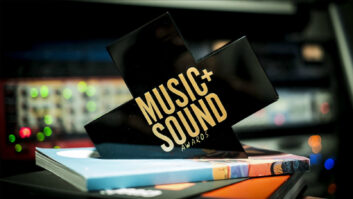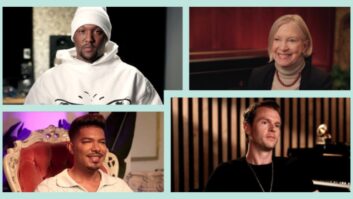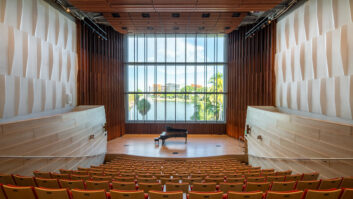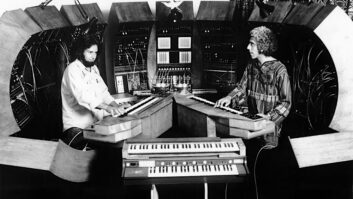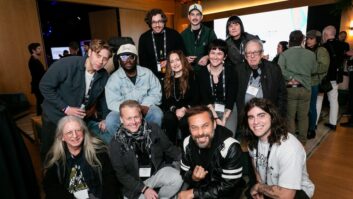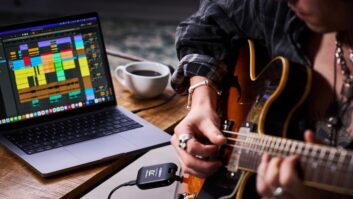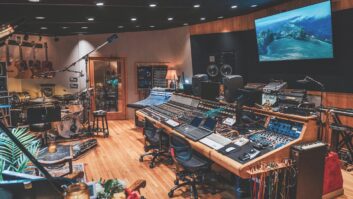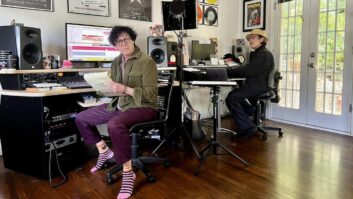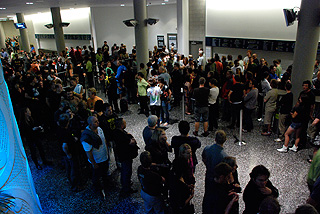
Auckland, New Zealand fans line up for their Pixies same-day release, March 2010
It seems like a no-brainer in this age of instant gratification. You go to see your favorite artist, love the show, then before leaving the venue put down a credit card (if you haven’t prepaid with your ticket purchase) and take home a quality audio recording, maybe with HD video, perhaps some behind-the-scenes footage from soundcheck that same day. A photo gallery. Web links. Unreleased tracks. And the whole package comes on microSD, USB wristband, beamed to your iPhone or Droid, or on a preprinted, limited-edition CD/DVD package.
It’s all happening today. The technology exists; artists are using it. It just hasn’t gone mainstream. But it’s about to.
The history of same-day recording is as old as the history of bootlegs, and it’s certainly been updated for the BitTorrent/YouTube generation. Plenty of live performances are available for free on the Internet, but they are often of low quality, and their distribution, legal or illegal, remains outside of the artist’s control. To counter—or sometimes to encourage—file sharing, a number of forward-thinking acts have embraced the concept and taken matters into their own hands. The Barenaked Ladies, for one, have made nearly every show available since 2005. Pearl Jam pioneered—and mastered—the process of next-day delivery years ago. And others have used variations through their own Websites and marketing promotions.
At the same time, a number of well-funded efforts have sprung up over the past decade to deliver same-day content to fans. DiscLive, a New York–based company, was in early in the game, with racks of duplicators churning out CDs at selected venues in the early 2000s. They were followed soon by Clear Channel’s entry, InstantLive (now owned by LiveNation), which created quite a stir when it filed a patent claim on the same-day recording/distribution process. (The patent was revoked in 2007.) Fab Channel was a player for years. Basecamp Productions is still going strong.
Among the more established companies operating today are Aderra Media Technologies, an L.A. company founded by musician/composer Ed Donnelly, and Abbey Road Live, an independent division of EMI with an Americas office headed by Zach Bair, one of the principals in Immediatek, which purchased DiscLive in 2005. Both founders are first and foremost fans who left a concert wanting to relive the magic. Both are committed to changing the way artists connect with their audience.
“We see ourselves as providing a bridge between the artist and the fan so that it’s not just a live show,” says Donnelly, whose company distributes in any platform you might envision but seems to have perfected USB wristbands and all its kin. “The conversation between artist and fan can continue long after the last note has sounded. When you use one of our multimedia devices, whether it’s a microSD card or USB drive, there’s a full interactive multimedia center. You plug it in, the Dashboard deploys and you don’t get just the audio recording. You also get behind-the-scenes interview footage, special Web offers, gateways for the artist to push to the fans later on. We’re on tour with an artist right now where when you buy the USB, you get their new studio album, two catalog albums, an HD music video, three behind-the-scenes video shoots, in the studio. Then over the course of the tour, you’ll get six or seven more live shows, plus spontaneous performances they might do at a rest stop at the side of the road. This is content created specifically to connect artist and fan, a continuous re-engagement.”

Zach Bair heads up Abbey Road Live, an independent division of EMI U.S.
“We fulfill a need,” adds Bair, “for instant gratification, for quality content and for new revenue for the artist. Our instant products create a very personal connection. Many of our releases are limited-edition, numbered CD/DVD units, making them much more of a memento than a live album released for mass distribution. Though we can do that, too. I’m definitely a believer in the digital frontier, with things like USB devices and mobile applications—we deployed a Pixies mobile app prior to this spring’s tour and have almost 25,000 downloads from the iTunes store. But I think the core, sexy product is a physical device that you can play on the spot. It’s like saving your ticket stub, or as Forbes put it: ‘It’s better than a T-shirt!’”
There’s been a lot of press lately over new business models for artists, new ways to connect to the core fan base in the wake of declining CD sales. While the more traditional model of album release/tour/merchandise is hanging by a thread, innovative acts are looking for new ways to connect, most of it involving variations on Facebook/Twitter and all forms of social networking. But artists and labels are also banking on the fact that those connections bring in new revenue. This is new money, both companies emphasize, without any upfront costs to the artist or label. And while each company has a standardized business model, they each customize their involvement based on an artist’s goals.
“We’re doing innovative business deals all the time,” says Bair, whose company, Immediatek/DiscLive, offered the first iPod downloads and the first DVD same-day product. “We don’t ask the artist for publishing or anything like that. They own the masters and we have an exclusive copyright for ‘x’ amount of time to sell our product. Typically we do a 50-50 net split with the artist off the back end once the costs come off the top. Very clean, very simple, very transparent accounting.”

The Aderra USB wristband operation in mass-copy mode. Note the scalable, modular flight packs.
“We take on every project, no matter the artist or genre, and work to customize it,” adds Donnelly. “There are a lot of common links, but we build each and every project from the ground up, a great live recording being the foundation. Now, that recording might involve anything from a full 48-channel truck rolled up to the venue to a couple of mics in the air going through some high-quality preamps. It all depends on the artist and the venue—what will best re-create the magic of that live experience.”
Bair prides himself on quality, emphasizing that he employs the core team from DiscLive that has been doing this for the longest time. Following the purchase of DiscLive, his company, Immediatek, purchased Moving Records, which had a reputation for quality multitrack recordings. He noticed a boost in quality right away, and they began splitting digitally direct from the snake, doing a full mix on their own console, with their own, experienced engineers. Today, Abbey Road Live also offers any package an artist might want, with full redundant systems built into the flight packs or mobile vehicles if the client wants to spring for the more controlled atmosphere.
Still, the question remains: Why is this not the norm? Why not every night, at every show?
“There’s a few factors that play into that,” says Donnelly. “The first is the fan perspective. Once fans become accustomed to attending a performance with the knowledge that they can walk away with the show, that wall will come down. And we’ve already seen that happen in towns that we’ve revisited with artists.
“The second part is that there is a lot of disruption in the music industry right now, and we are part of that disruption,” he continues. “Any time you talk about digital content and digital distribution, nobody has come up with a clear direction. Sometimes we are wholeheartedly embraced by the artist, management and label, and sometimes an act just wants to dip their toe in the water and see how things work out. Once we show them that this is a viable way for people to not just deliver music directly to fans, but that they can continue the conversation, this will become much more mainstream.”
“Much of the acceptance is simply education,” adds Bair. “When we first started this with DiscLive, most labels were reluctant, perceiving us as competition to a studio release or their own efforts. But now they’re seeing us as part of the overall pool. When you buy a ticket to a concert and can just click a box to add a CD or USB of that night’s performance, then we will be more integrated into the industry stream and the quicker it will spread.”
“In terms of how people wrap their heads around Internet file sharing, the change from 2006 to 2010 is remarkably different,” Donnelly concludes. “When I first began going out to speak to artists and managers, one of their big concerns was DRM and piracy. What’s going to happen when these kids get home and put it on the Internet? Those are questions we rarely hear anymore. If we sit down in front of an artist today, they ask a couple of questions right away. The first one is what does it sound like. But the real question is: In this landscape, what can you do for fans that is cool, that they will participate in. I think we offer a great solution for that.”
Tom Kenny is the editor of
Mix.
